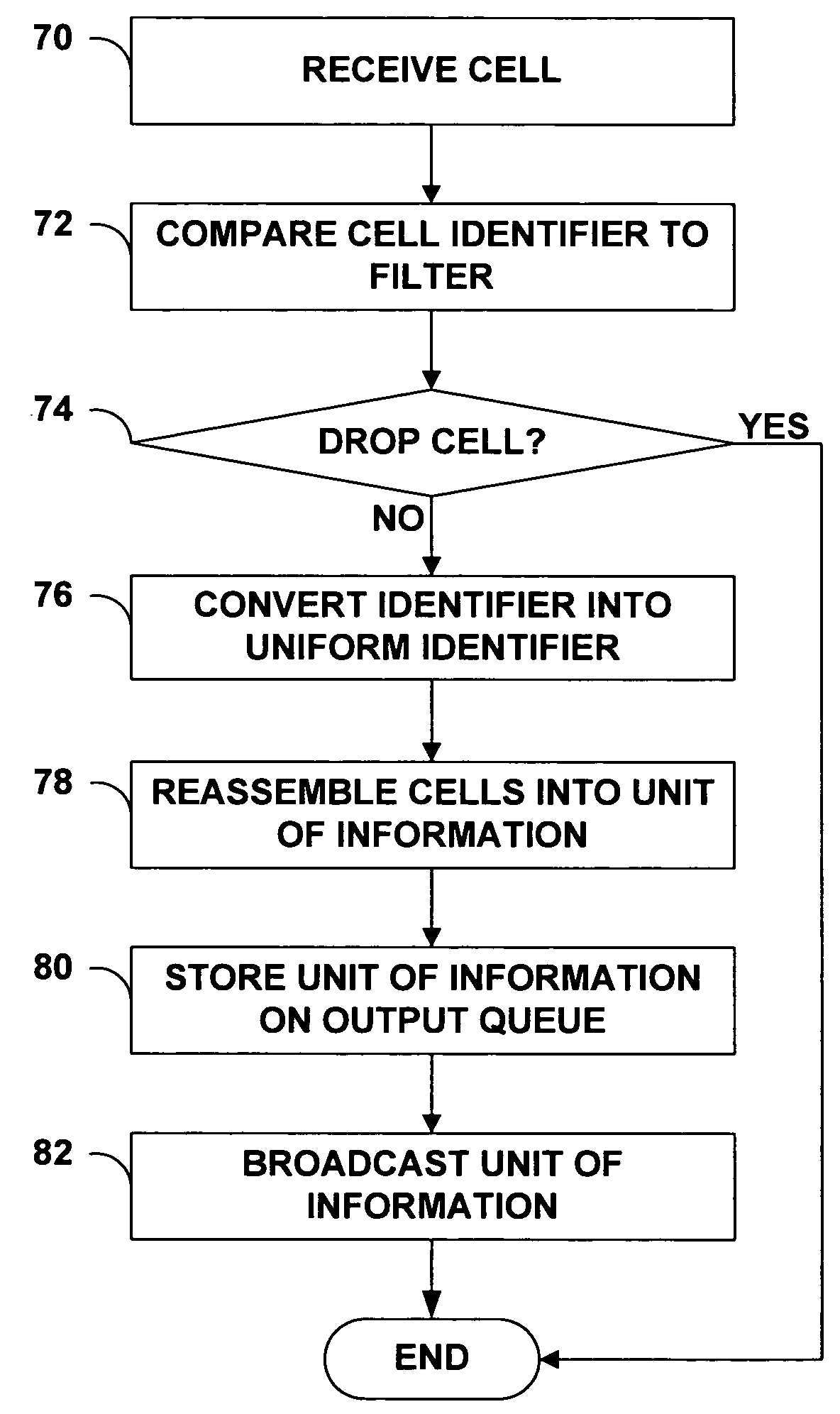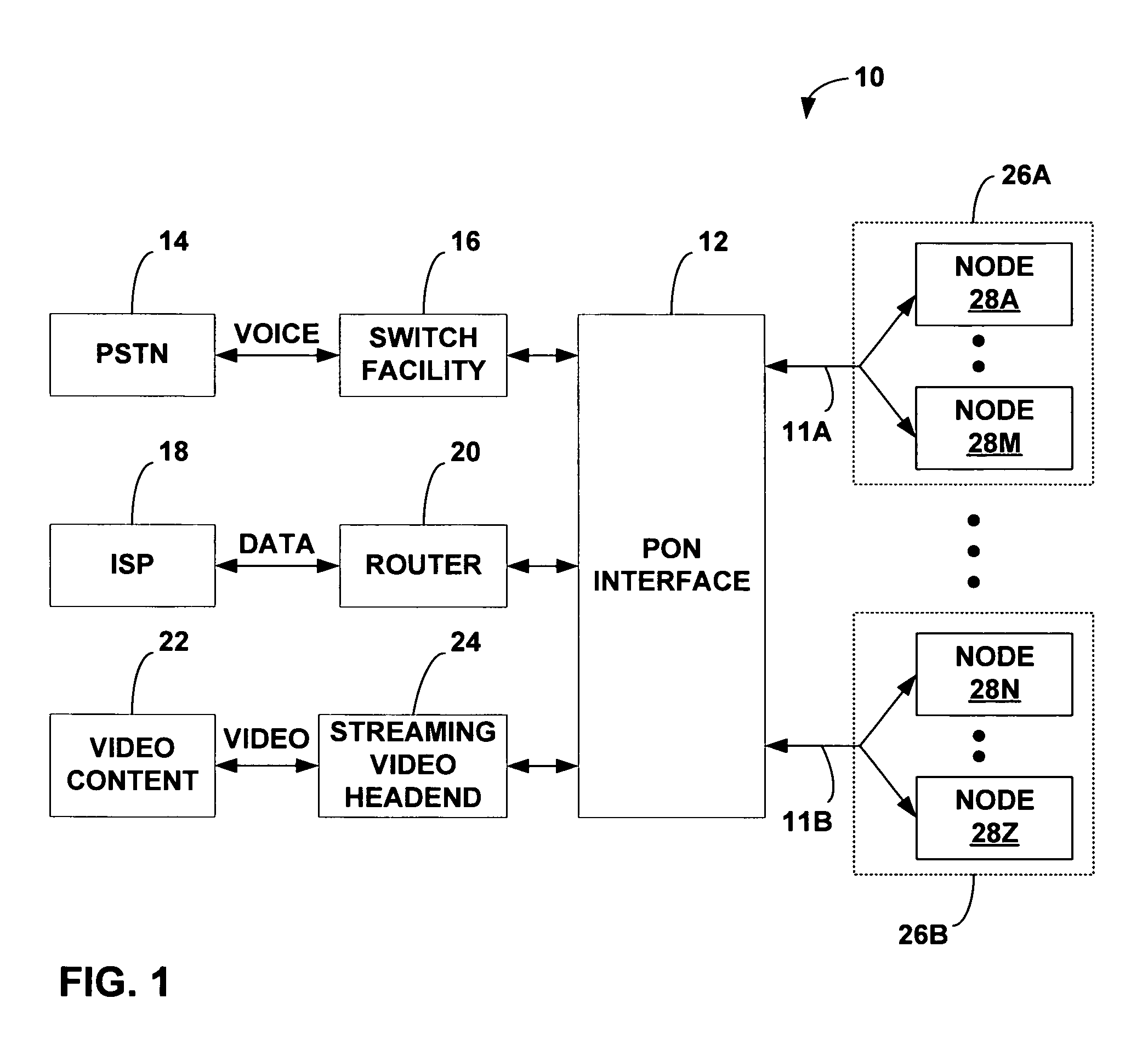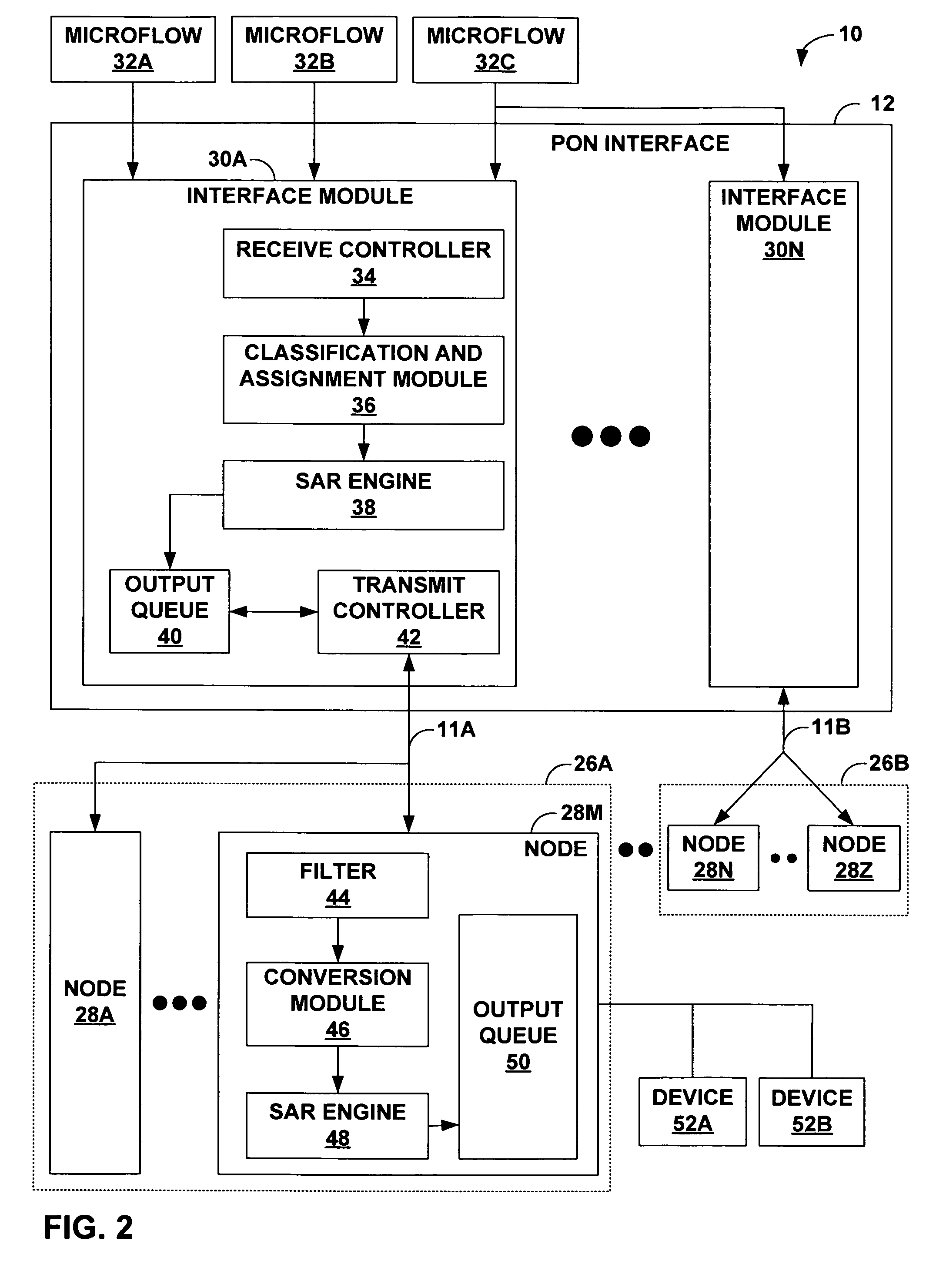Merging multiple data flows in a passive optical network
a technology of optical network and data flow, applied in the field of computer networking, can solve the problems of increasing the complexity and cost of each network node, reducing the complexity of the network node, and using conventional traffic metering mechanisms, so as to reduce hardware overhead, avoid memory and logic cost increases, and reduce the effect of logi
- Summary
- Abstract
- Description
- Claims
- Application Information
AI Technical Summary
Benefits of technology
Problems solved by technology
Method used
Image
Examples
Embodiment Construction
[0029]FIG. 1 is a block diagram illustrating a passive optical network (PON) 10. As shown in FIG. 1, PON 10 can be arranged to deliver voice, data and video content (generally “information”) to a number of network nodes via a plurality of optical fiber links. FIG. 1 depicts two optical fiber links 11A and 11B for purposes of illustration. Exemplary components for implementing a PON are commercially available from Optical Solutions, Inc., of Minneapolis, Minn., and designated by the tradename Fiberpath 400™, including the Fiberdrive™ headend bay interface and the Fiberpoint™ subscriber premise nodes.
[0030]A PON interface 12 may receive voice information, for example, from the public switched telephone network (PSTN) 14 via a switch facility 16. In addition, PON interface 12 may be coupled to one or more Internet service providers (ISP's) on Internet 18 via a router 20. As further shown in FIG. 1, PON interface 12 may receive video content 22 from video content suppliers via a streami...
PUM
 Login to View More
Login to View More Abstract
Description
Claims
Application Information
 Login to View More
Login to View More - R&D
- Intellectual Property
- Life Sciences
- Materials
- Tech Scout
- Unparalleled Data Quality
- Higher Quality Content
- 60% Fewer Hallucinations
Browse by: Latest US Patents, China's latest patents, Technical Efficacy Thesaurus, Application Domain, Technology Topic, Popular Technical Reports.
© 2025 PatSnap. All rights reserved.Legal|Privacy policy|Modern Slavery Act Transparency Statement|Sitemap|About US| Contact US: help@patsnap.com



